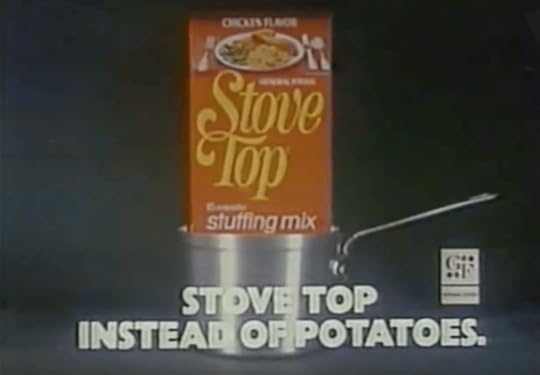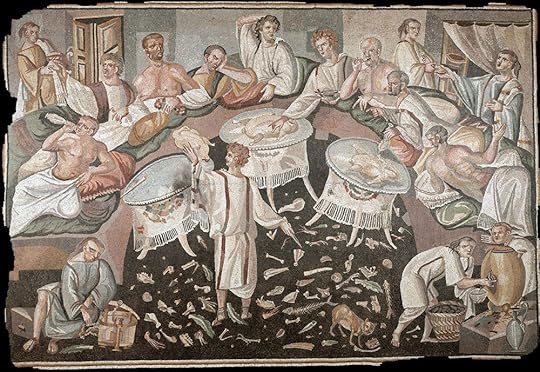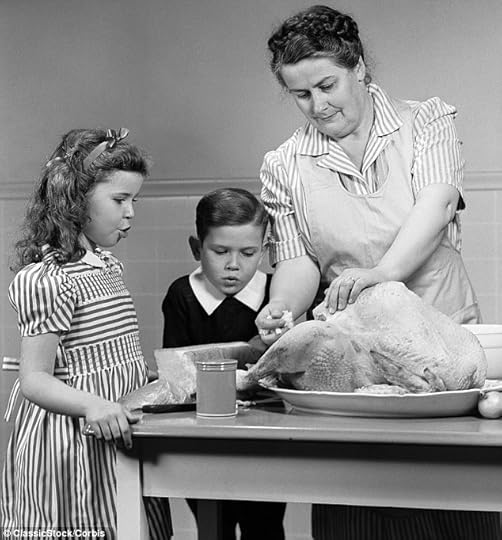Stuffing or Dressing? A Definitive non-answer.

“Stove Top Stuffing?! I’m Staying!”
One of us comes from the South (Brent,) and the other comes from the North (Josh.) In the South, most folks call that bread-y stuff you put inside a turkey “dressing.” And in the north, most people call it “stuffing.”
Except that Brent grew up loving Stove Top Stuffing – which he calls “dressing” even though its literal name is “Stuffing.” And Josh calls everything “stuffing,” except for the extra stuffing that doesn’t fit into the bird and is baked in a dish. He calls that “dressing.”
We suspect we’re not the only family with conflicting terminology for Thanksgiving’s 2nd most important dish.
So where did this divergence in terms from from? It’s difficult to say for certain. But there are a few clues dropped throughout history.
The first recorded history of purposefully inserting things into an animal or bird (for culinary purposes at least) comes from the Roman cookbook, Apicius De Re Coquinaria. Most of those recipes called for inserting vegetables, offal, or grains into animals. There is also some evidence that they also stuffed animals with other animals. Like camels stuffed with sheep. Or goats stuffed with birds. Which we suppose means we can blame the romans for “Turducken.”

The first generally used English word for stuffing/dressing was “forcemeat.” Which seems pretty straightforward, right? You force stuffing/dressing into meat. But no. Force, when used in forcemeat, was just a mispronunciation of “farce.” Farce is the french word for the minced vegetables, grains, and meat that are – you guessed it – stuffed into roasts or birds.
But let’s not spend another moment on the forcemeat farce – since nobody calls it that anymore anyway. Back to stuffing v. dressing.
Use of the word “stuffing” as a noun can be found all the way back to the Middle Ages. The first American recorded usage of it in relation to turkeys was in 1803 – just one year after William Beekman built his farm.

“Dressing,” however, has a little more confusing history. Dressing has been used as a verb for centuries. Think of it as any sort of preparation of a dish. Like dressing a salad. Or dressing a roast. It wasn’t until the mid-19th century that dressing began begin used in cookbooks as a noun, ie: stuffing a bird with dressing. A few historians believe that dressing began to be used in place of stuffing during this time because stuffing sounded vaguely lewd to the Victorian ear. But then again, dressing, seems like it might have some lewd connotations as well.
Not really clearing things up here, are we?
In more recent history, food writers have begun insisting that stuffing is what goes inside of a bird, while dressing is what’s baked in a dish. But there’s no etymological or historical basis for that distinction. They’re just trying to force their opinion as fact, just like your crazy Uncle discussing politics at the Thanksgiving table.

What is certain is that different ethnic groups around America have developed infinite variations of stuffing/dressings for their Thanksgiving repasts. New Englanders have, of course, embraced the traditional bread stuffing – often made with Bell’s Seasoning (first sold in 1867.) Those who live along the coast might also include whole oysters. Southerners may use cornbread and hot sausage. Or rice in the Carolinas and Gulf Coast States. Around Pennsylvania and in other Amish regions you may find mashed potatoes added to their bread stuffing.
Here on Beekman 1802 Farm, we don’t much care what you call it.
Just make sure there’s enough of it for leftovers.
Here’s a few of our own favorite stuffing recipes. (If you have any, share them in the comment section.)



